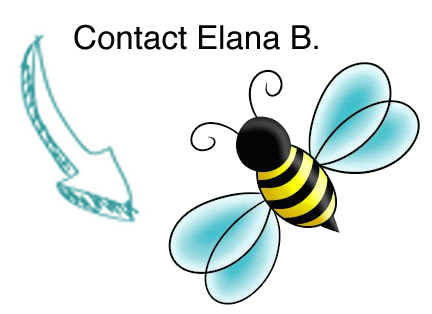By Elana B. Multi award-winning writer, advertiser, speaker and internationally published author
Share on: Facebook; Twitter; Tumblr;
Breast cancer can be a scary and life-threatening possibility for any female. Having known breast cancer in your family puts you at slightly greater risk, but it does not mean that you will develop breast cancer. For anyone, early detection and preventative measures are the best chance for reducing your risk of breast cancer.
Angelina Jolie wrote, in her op-ed column in The New York Times, and disclosed that she had a prophylactic double mastectomy. Jolie is the carrier of the BRCA1 gene, which substantially increases a woman’s risk of breast and ovarian cancer. As one of the most well-known leading ladies of all time, Angelina Jolie, who lost her mother, Marcheline Bertrand, to breast cancer, stated that she did not want to subject her children to the same experience. Jolie’s message was loud and clear. If you are at great risk, be proactive about your personal health and future.
Many breast cancer experts and advocates applauded Jolie for exploring her options. Jolie stated that she met with genetic counselors and underwent testing for the BRCA1 and BRCA 2 gene, before courageously opting to have both breasts removed and to undergo reconstructive surgery. Jolie’s proactive stand has helped inform women of all ages, and especially those with strong family histories of breast cancer to seek out and explore options of genetic testing.
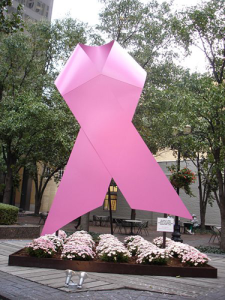 So what are the risk factors for breast cancer?
So what are the risk factors for breast cancer?
The biggest risk factor is being female. The second biggest is “age.” Only 10 percent of all breast cancer cases are thought to be related to genetic risk factors. The remaining 90 percent appear to be triggered by environmental factors. Since this puts every woman potentially at risk, the best way to fight breast cancer is to take preventative measures to lower your risk and have a plan that helps you detect the disease in its early stages.
Some risk factors, like a person’s age or race, can’t be changed. Many risk factors are linked to cancer-causing factors in the environment. Still others are related to personal behaviors, such as smoking, drinking, poor diet and obesity.
In a simple list, risk factors include:
1. Being a woman
a. Men can develop breast cancer, but this type of cancer is about 100 times more common among women than men.
2. Aging
a. Your risk of getting breast cancer increases as you get older.
b. So what age do you start to worry? Worrying about what might be does not help. Take precautions and preventative measures and feel confident that your proactive approach is your best chance of preventing cancer or early-detection which is important for survival.
3. Having a lump or lumps in your breasts
a. Many lumps can be benign. Having a benign growth still places you at a greater risk than people who have no growths.
4. Genetic factors
a. About approximately 10% of breast cancer cases are thought to be genetic, meaning that they result directly from gene defects (called mutations) inherited from a parent.
5. BRCA1 and BRCA2
a. The most common cause of hereditary breast cancer is an inherited mutation in the BRCA1 and BRCA2 genes. If you have inherited a mutated copy of either gene from a parent, you have a much higher risk of developing breast cancer during your lifetime than someone without the gene.
b. Breast cancers linked to BRCA 1 and BRCA 2 occur more often in younger women and more often affect both breasts than cancers not linked to these mutated genes.
c. If you have these mutated genes, you also have an increased risk for developing other cancers, particularly ovarian cancer.
6. Smoking
a. Studies have found that long-term heavy smoking is linked to a higher risk of breast cancer.
b. Secondhand smoke contains chemicals that, in high concentrations, cause breast cancer in rodents.
c. It is also noted that chemicals in tobacco smoke have been found in breast milk.
7. Dense breast tissue
a. Unfortunately, dense breast tissue can also make mammograms less accurate.
b. A number of factors can affect breast density, such as age, post menopause, certain medications, menopausal hormone therapy, pregnancy and genetics.
 8. Personal history of breast cancer
8. Personal history of breast cancer
a. A woman with cancer in one breast has an increased risk of developing a new cancer in the other breast or in another part of the same breast.
9. Starting a menstrual cycle before age 12, or having menopause after age 55
a. The increase in risk may be due to a longer lifetime exposure to the hormones estrogen and progesterone.
10. Alcohol
a. The risk of having breast cancer increases with the amount of alcohol consumed.
b. Excessive alcohol consumption is also known to increase the risk of developing several other types of cancer.
11. Lack of physical exercise
a. Evidence is growing regarding the link between exercise and cancer
b. Those who exercise just 20-30 minutes a day (increasing heart rate), or at least 150 minutes a week reduce their risk.
c. Walking quickly, Zumba, playing tennis or any other activity that raises your heart rate and causes you to break a sweat.
12. Race and ethnicity
a. White women are slightly more likely to develop breast cancer than are African-American women.
b. Asian, Hispanic, and Native-American women have a lower risk of developing and dying from breast cancer.
13. Certain benign breast conditions
a. Women diagnosed with certain benign breast conditions might have an increased risk of breast cancer. These benign conditions are generally divided into 3 groups:
Non-proliferative lesions, which include:
• Adenosis
• A single papilloma
• Ductal ectasia
• Epithelial-related calcifications
• Fat necrosis
• Fibrosis or simple cysts
• Mild hyperplasia
• Periductal fibrosis
• Squamous and apocrine metaplasia
• Other benign tumors (adenomyoepthelioma lipoma, hamartoma, hemangioma, phyllodes, neurofibroma)
[adinserter block=”14″]
For more information on Proliferative lesions without atypia and proliferative lesions with atypia check BreastCancer.org or NationalBreastCancer.org
14. Being overweight or obese
a. Overweight and obese women, which is defined as having a BMI (body mass index) over 25, have a higher risk of being diagnosed with breast cancer compared to women who maintain a healthy weight.
b. Over-weight and post-menopausal increases the risk.
c. Being overweight also can increase the risk of breast cancer reoccurrence.
d. There is a higher risk for those who are over-weight or obese due to fat cells that make estrogen; too much estrogen can make hormone-receptor-positive breast cancers develop and grow.
e. Extra fat around your belly may increase the risk of breast cancer more than the same amount of fat around your hips and thighs.
f. Women who are overweight generally have higher blood insulin levels which has been linked to some cancers, including breast cancer.
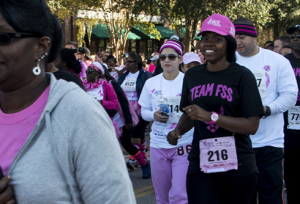 15. Birth control pills
15. Birth control pills
a. Using oral contraceptives (birth control pills) has been reported to have a slightly greater risk of breast cancer than women who have never used them.
b. Once the pills are stopped and after a little amount of time, it is said that the risk goes back to normal.
16. Nightshift
a. There is concern that breast cancer risk may be indirectly affected in night-shift workers exposed to “light at night” which may affect melatonin synthesis.
b. As many as 15-20% of people in Europe and the U.S. work the night shift. Some research suggests that working the night shift might disrupt the body clock or circadian rhythms and this may cause cancer.
17. Chemicals in the environment
a. There has been concern about exposure to pesticides because of their widespread use in agriculture for crop and livestock protection, for public health in controlling disease-bearing insects, for pest control in homes, solvents used in schools, workplaces, gardens, and in recreational areas such as parks and athletic fields.
b. Substances found in some plastics, certain cosmetics and personal care products, pesticides (such as DDE), and PCBs (polychlorinated biphenyls) seem to have cancer causing properties, which could affect the risk for breast cancer. While this understandably causes a great deal of public concern, the risk of not protecting crops from being decimated by insects and other animal-life, has seemed to out-weigh the prospect of possibly causing trouble after decades use.
c. Some farmers markets supply organic foods with no pesticides; these are a safer bet when trying to purchase healthy, pesticide free foods.
d. The fear some farmers have stated in not using pesticides is the massacre of crops due to insects and rodents. Unfortunately, trying to save crops for dietary needs for the masses, the hope is that the ultimate price tag will not be cancer.
e. We are exposed to thousands of naturally occurring and synthetic chemicals over a lifetime. Certain chemicals can be stored in the fat of fish or animals, and these chemicals can be stored in the body for a long time. Some chemicals first need to be “activated” by enzymes in the body to become cancer-causing chemicals (carcinogens). Other chemicals might not pose any cancer risk. It is impossible to make generalizations.
There has been mention from environmental scientists that synthetic chemicals used in the packaging, storage, and processing of some store bought, prepackaged foods might be harmful to human health over the long term. This is theorized that because most of these substances are not inert and can leach into the foods we eat. Despite the fact that some of these chemicals are regulated, people who eat packaged or processed foods are likely to be chronically exposed to low levels of these substances throughout their lives. At this time, not enough is known about their long term impact.
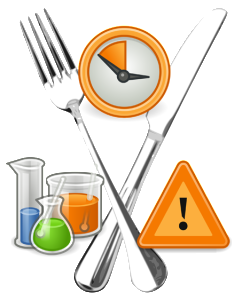
The best protection is to conduct research on the chemicals in your food and environment (work and home) and determine which one’s have the potential to cause cancer, and then limit your exposure.
h. If you want to get as close to the low-down as possible on pesticide product information, the following is available on the U.S. Environmental Protection Agency (EPA) website: Pesticide Product Information System (PPIS). The PPIS contains information concerning all pesticide products registered in the United States. It includes registrant name and address, chemical ingredients, toxicity category, product names, distributor brand names, site/pest uses, pesticidal type, formulation code, and registration status. The PPIS are ascii files. (American Standard Code for Information Interchange (ASCII). Interested parties may access them using a variety of database and spreadsheet software.
Breast cancer occurs in two broad categories: noninvasive and invasive
• Noninvasive (in situ) breast cancer: Cancerous cells remain in a particular location of the breast, without spreading to surrounding tissue, lobules or ducts.
• Invasive (infiltrating) breast cancer: Cancerous cells break through normal breast tissue barriers and spread to other parts of the body through the bloodstream and lymph nodes.
Breast cancer is also classified based on where in the breast the disease started (e.g., milk ducts, lobules), how the disease grows, and other factors.
This means taking careful inventory of the household and personal care products you use, and the furnishings and other potentially toxic items you get into contact with on a daily basis. Toxic overexposure undoubtedly play a major role in cancer development, and recent studies are finally starting to shed light on the worst offenders.
What can help limit your chances of getting breast cancer?
As with anything, the natural approach is generally better for your health. Through appropriate lifestyle changes, such as cleaning up your diet, optimizing vitamin D levels, exercising, and avoiding toxins from every source possible, there is evidence that you can reduce your risk of getting breast cancer and other cancers.
Eating a healthy diet that is rich in vegetables, fruit, fish, low-fat dairy products and small amounts of poultry, has also been linked with a lower risk of breast cancer in some studies. Your best bet is:
• Limit sugar, (if at all possible cut out sugar except natural sugar from fruits) refined, boxed or processed carbohydrates, and alcohol.
• Eat small portions of lean meat, poultry and fish (no more than 6 to 7 ounces a day).
• Remove the skin and fat from meat, poultry and fish.
• Make sure that ¾ of your plate is covered with fresh, nutrient dense vegetables.
• Eat only whole-grains (no white, over-processed breads.
• Make certain you eat less meat and dairy then you do vegetables and fruits. Organic is best.
• If you have dairy products, make sure the quantity is small.
• When choosing vegetables, go for variety.
• Drink plenty of water, and remember to keep hydrated (you can add lemon or lime to water to help neutralize acid
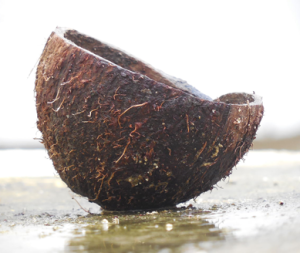 • Include organic coconut oil in your diet as a supplement or use it to cook with
• Include organic coconut oil in your diet as a supplement or use it to cook with
• Make sure you get enough vitamins and nutrients in your diet; otherwise, add these as supplements.
• Keep healthy snacks on hand, such as:
• Salad with lemon juice or another nice dressing is: Greek yogurt with olive oil and fresh herbs.
• Carrots, broccoli and celery sticks or other vegetables (organic is best).
• Salsa or avocados with vegetables (not chips) for scooping.
• Low fat Greek or plain yogurt with fresh fruit.
• Apple slices (Granny Smith apples have less acid and organic is best).
• Slices of oranges.
• Frozen berries.
• Unsweetened fruit tea or herbal tea.
Remember that it is important to include:
• 20-30 minutes a day of moderately fast-paced exercise
• Spend a little time each day, de-stressing either with yoga, meditation, or just close your eyes and listen to music.
• Although cortisol is an important hormone in the body, too much and it can cause several stress-related changes in the body, some of which can increase the risk of developing cancer.
• So what is good about cortisol? Secreted by the adrenal glands, it’s involved in the following functions and more:
• Proper glucose metabolism
• Regulation of blood pressure
• Insulin release for blood sugar maintenance
• Immune function
• Inflammatory response
Normally, cortisol is present in the body at higher levels in the morning and at its lowest at night. Although stress isn’t the only reason that cortisol is secreted into the bloodstream, it has been termed “the stress hormone” because it’s also secreted in higher levels during the body’s “fight or flight” response to stress.
• Get plenty of sleep
• Keep your body alkalized
o If you can handle it, take 1-2 teaspoons of Organic Apple Cider Vinegar (Braggs brand is good) with a full glass of water each morning before breakfast. After a week you can do the same before dinner. Most people have too much acid in their body so this should help neutralize it.
Consult your doctor before using any health treatment, plan, or activity — including vitamins, herbal supplements and natural remedies. Also, tell your doctor if you have a serious medical condition or are taking any medications. The information presented here is for educational purposes only and is in no way intended as a substitute for medical advice or counseling.
About the author: Elana B. is a multi award-winning writer, speaker, and internationally published author. As a writer and ghostwriter she has written hundreds of stories from shorts to books to screenplays.
A gifted storyteller, Elana B.’s new children’s series, Too Terribly Busy and the “Too Terribly” Series of books, teach in a fun, creative way some of the most important lessons in life. Through this entertaining series of books, children will learn morals, manners, how important it is to achieve goals, as well as conflict resolution. Sneak peek of the first story in the new series: TooTerriblyBusy-SP1.
More by Elana B. and other related articles:
Signs of Depression and How to Feel Good Again
30 Minutes of Physical Activity
The Feel Good Way to Better Health…Endorphins
Medical Conditions and Triglycerides
5 Tips to Help Improve Relationships
Natural Ways to Reduce High Blood Pressure
Lowering Risk for Cardiovascular Disease
Heart Disease – The Ticking Time Bomb
What is Type 2 Diabetes?
Other great articles:
The Writer’s Life and How to Make Money as a Writer






